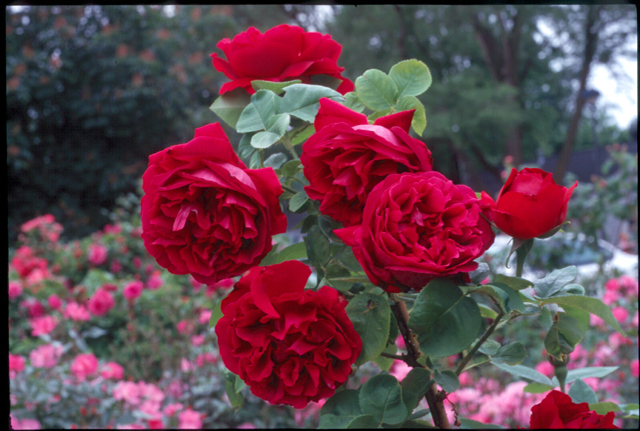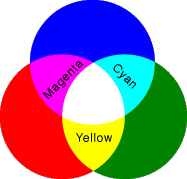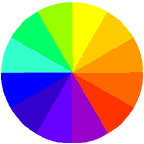Color Photography
|
| |
| Color
Science Primer Color
Photography (continued) >> |

above: Close up of rhododendron
at Toledo Botanical Gardens.
Fuji Velvia film; Olympus OM 2N 35mm camera with 50mm lens
|

above: Red roses at Toledo Botanical Gardens. Fuji Velvia film; Olympus OM 2N 35mm camera with 50mm lens
|

above: Red Lily at Toledo Botanical Gardens. Fuji Velvia film; Pentax ME Super 35mm camera with 50mm lens
|

above: Pink hibiscus at Toledo Botanical Gardens. Fuji Velvia film; Pentax ME Super 35mm
camera with 28mm lens
|

above: Fall scene at
Swan Creek Metro Park and Preserve, Toledo, Ohio. Kodak color print
film (type unknown); Pentax ME Super 35mm camera with 50mm lens. The
negative was scanned in, using an HP S20. Note that this image's fidelity
is not as good as the the images above: one of the many reasons for
choosing slide (transparency) film over print film.
|
Color Photography (continued) >>
All image on this sizes reduced several orders of magnitude
via Adobe Photoshop elements.
|
Color Perception
There are two basic ways by which we perceive colors (or, more accurately,
hues) of objects around us:
- Direct emission of light waves in the frequency
of the observed color. Example: you see the red
in the rose on your computer monitor. The cathode ray tube is
emitting red-tinted light.
- Absorption all other frequencies, reflecting back
to your eye only the light wave, or combination of light waves, that
appears as the observed color. Example: to see a yellow object --
such as a banana -- it is absorbing the blue part of the spectrum
and reflecting the red and green parts back to your eye,
which translates the combined frequencies as "yellow".
Color Photographs
Subtracting Colors (hues)
Images made by mixing printing inks and paints form colors by "subtractive"
mixing. This gives different colors to additive since the pictures themselves
are not light-emitting sources. The pictures reflect some of the primary
colors (red, green and blue) in the white light that illuminates
them, and absorb or subtract the other primary colors. Humans see the
reflected primary colors added together.
No matter how multi-colored prints or slides may appear, they are comprised
of only three secondary colors arranged in layers. When we
look at photos, light passes through the layers and combines to give
full color. Developing a print film produces a color negative; in a
slide (or transparency), a process called color reversal forms a positive
image on the film.
Color Reversal Process:
- Unexposed slide film: The film contains three color-sensitive
layers. The one in the middle is sensitive to green.
- First developer: Magenta light contains no green. It does
not expose the layer, so silver develops.
- Color developer: This attaches a magenta dye to the silver
particles.
- Silver dissolved: Dissolving the silver leaves the layer
colored magenta.
|

Primary Colors for the additive process
Secondary Colors (Magenta, Cyan, Yellow) are used in the printing process

Tertiary Colors (the "Color Wheel" designed
by Isaac Newton): formed by mixing one primary
and one secondary color.
|
Learn more...

Exploring Color Photography
by Robert Hirsch (Amazon.com)
A college-level textbook for students and serious hobbyists.
This book describes tools and techniques necessary for the expressing
artistic and scientific ideas through photography. The approach is sensible,
explaining how theory relates to practice. Assumes that readers have
a working knowledge of b&w photography. Includes a wide range of
color photos.
Home > Photography: Introduction | Mistakes
and Corrections | Color
Photography | Scanner
Photography | Astronomy
photos |







